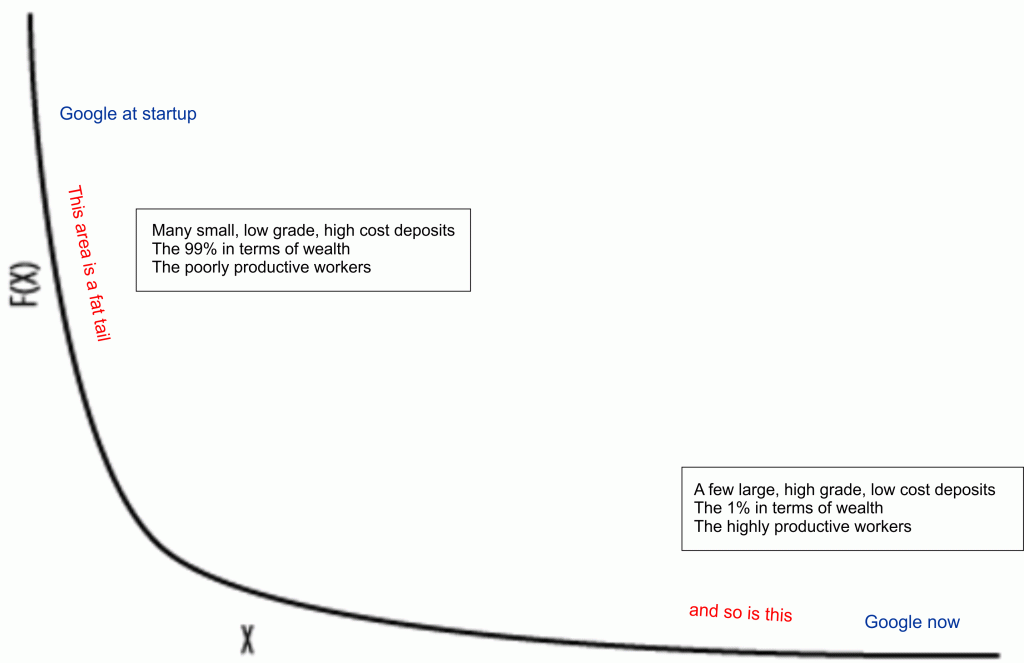The Economic Reality of Geology: Part Two
Feedback from Part One has been interesting. I think that people most often consider that any distribution will be normal (or Gaussian). This is not true, but may partly explain why rare events, such as financial crises, are so unexpected. They are often referred to as outliers, which implies outliers to a normal distribution.
However, with a Paretian distribution, such events are expected. These events lie on the “fat tail” of the curve, as shown below.
I contend that most energy and mineral deposits are paretially distributed. That is, a few large, low cost deposits, a reasonable number of middling deposits, and a large number of small, low grade, high cost deposits.
The above curve is a simplification, for clarity. There are many different Paretian curves, depending upon the input variables. Further, technological advances will change the shape of the curve. But it will still remain Paretian, not normal, which is my main point.
This Paretian distribution directly impacts economic life. As the industrial age advances, minerals and energy consume increasing capital and labour, for the same output. The implications are profound for our future.
Finally, an example from the oil patch. According to Wikipedia there are more than 65,000 oil fields in the world, but virtually all production comes from about 1,500 fields. And only about 30 fields are larger than 10 billion barrels.
The largest, with one of the lowest production costs, is the Ghawar field in Saudi Arabia, which has been in production for decades. It originally had around 80 billion barrels of recoverable oil, and is thought that as much as 50 billion barrels remaining. There is a comparable sized oil field offshore of Brazil. However, it is deep and the geological setting is an extreme challenge for development. If it ever can be developed, the oil price would have to be much higher than it is now.
Conclusion
Do not assume normal distribution without solid evidence.
The paretial distribution of minerals and energy deposits will have a significant influence on our future.

